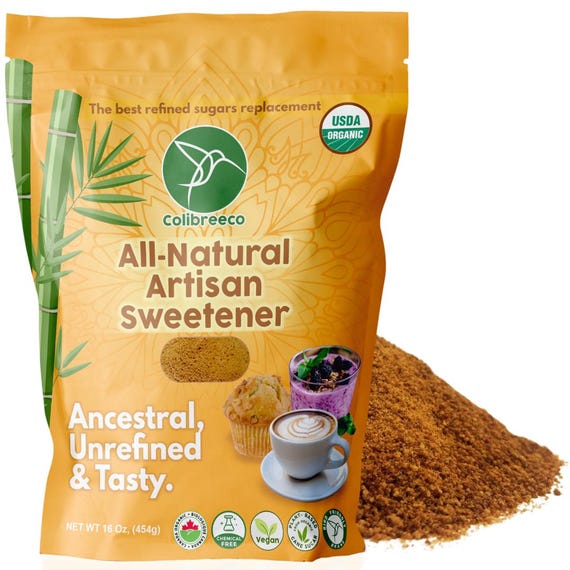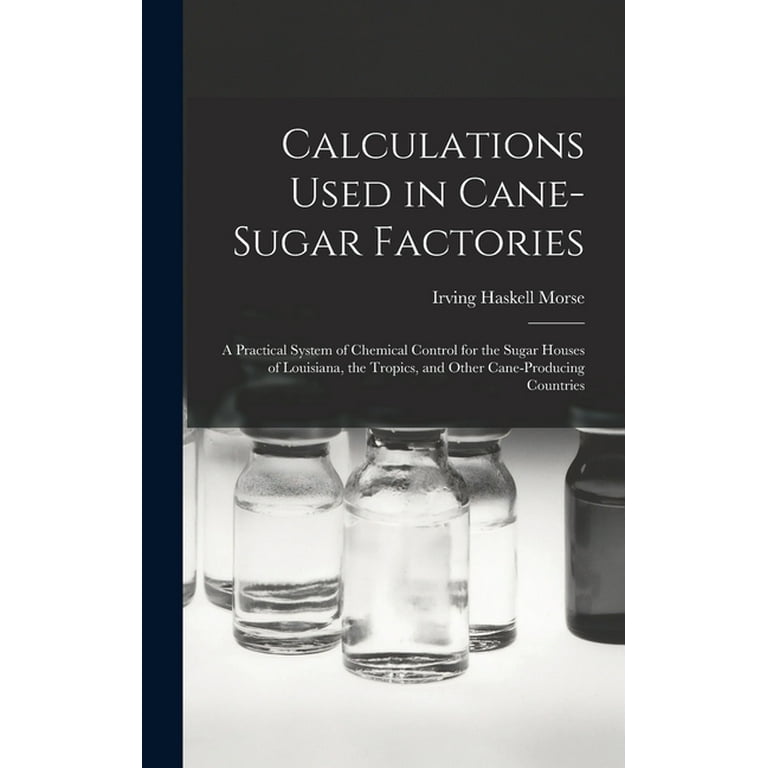Discovering the Versatile Use Sugar Cane Beyond Sugar
Sugar Cane is frequently linked entirely with sugar, yet its applications extend much past. This flexible plant plays a pivotal function in numerous industries, consisting of biofuels and bioplastics. Furthermore, its fibers add to sustainable building and fabrics. The financial implications of sugar Cane production better underscore its significance. As technologies continue to emerge, the capacity of sugar Cane to drive financial and eco-friendly advancements ends up being significantly evident. What other surprises does this durable plant hold?
The Function of Sugar Cane in Biofuels
As nations look for lasting power sources, sugar Cane has become a vital player in the biofuels market. This exotic plant is abundant in sucrose, which can be fermented to create ethanol, an eco-friendly gas choice to nonrenewable fuel sources. The farming of sugar Cane for biofuel manufacturing not just lowers greenhouse gas exhausts yet additionally adds to power protection, specifically in sugar-producing nations.
Additionally, sugar cane-derived ethanol can be blended with gasoline, enhancing its octane rating and reducing reliance on non-renewable sources. The by-products of sugar Cane processing, such as bagasse, are valuable for generating electricity, making the whole manufacturing cycle energy-efficient.
Research study continues to explore innovative approaches for maximizing power return from sugar cane, solidifying its duty in the change to cleaner energy remedies. As global need for lasting fuels increases, sugar Cane attracts attention as an essential component of the biofuel sector.
Sugar Cane as a Resource of Bioplastics
Although the environmental influences of plastic air pollution are progressively worrying, sugar Cane provides an encouraging alternative as a source of bioplastics. Stemmed from sustainable sources, bioplastics made from sugar Cane can considerably decrease dependence on petroleum-based plastics. These bioplastics are produced with the fermentation of sugars extracted from the walking stick, resulting in materials that can be compostable or eco-friendly, depending on their formula.
Using sugar Cane bioplastics not just decreases carbon exhausts but additionally advertises lasting agricultural methods. By utilizing agricultural waste and by-products, the general ecological impact of production is lessened. In addition, items made from sugar Cane bioplastics can effortlessly incorporate right into existing waste management systems, attending to problems about waste build-up.
As sectors seek sustainable services, sugar cane-based bioplastics stand for a feasible option that aligns with worldwide efforts to combat plastic contamination and cultivate a round economic situation.
Medicinal Applications of Sugar Walking Stick
Sugar Cane is acknowledged for its antioxidant residential properties, which contribute to various health and wellness benefits. In addition, it has been made use of in standard treatments throughout societies, highlighting its significance in alternative medicine. These characteristics emphasize the capacity of sugar Cane in the field of medicinal applications.
Antioxidant Residences of Cane
Various studies have actually exposed that sugar Cane possesses considerable antioxidant residential or commercial properties, making it a valuable part in medicinal applications. The phenolic compounds located in sugar cane, such as flavonoids and phenolic acids, add to its ability to reduce the effects of free radicals, consequently decreasing oxidative stress and anxiety in the body. This antioxidant activity is linked to numerous health benefits, consisting of improved cardiovascular wellness and enhanced immune feature. Furthermore, sugar Cane removes have been shown to show anti-inflammatory effects, which can better sustain overall wellness. By combating oxidative damages, sugar Cane may contribute in the avoidance of chronic conditions, making it a fascinating topic of research for its potential restorative usages in contemporary medication.
Typical Remedies and Uses
While modern medicine frequently relies upon artificial compounds, conventional treatments utilizing sugar Cane highlight its longstanding importance in various societies. In several exotic areas, sugar Cane juice has been used as a natural remedy for conditions such as dehydration and digestive system concerns. Its high water material and crucial nutrients make it a popular therapy for urinary system tract infections and kidney rocks. In addition, sugar Cane is thought to possess anti-inflammatory buildings, helping in the relief of sore throats and respiratory system conditions. Herbal remedies commonly incorporates sugar Cane in mixtures to improve energy and boost general well-being. These old-time methods underscore the convenience of sugar cane, expanding its value beyond sweetness to encompass health and wellness and wellness applications.
Eco-Friendly Construction Products From Sugar Cane
Sugar walking cane, commonly recognized for its pleasant yield, is getting attention as a resource of environment-friendly construction materials. These products offer sustainable structure services, including eco-friendly composites that lower environmental influence. Furthermore, sugar cane-derived products supply effective insulation residential properties, improving power effectiveness in structures.
Lasting Building Solutions
As the worldwide need for lasting construction materials increases, cutting-edge solutions originated from sugar Cane have actually become a viable option. This eco-friendly resource provides different applications in green building options, especially through its by-products. Sugar Cane fibers, understood for their stamina and durability, can be used in creating insulation materials and composite panels. Additionally, the juice and molasses from sugar Cane can be processed into bio-based adhesives, decreasing reliance on petroleum-based products. Using sugar Cane not just decreases waste but also adds to lower carbon emissions throughout manufacturing. In addition, including these products right into building and construction methods supports the circular economic situation, advertising sustainability while attending to the pushing environmental challenges faced by the construction sector.
Biodegradable Compound Materials
Biodegradable composite materials have actually amassed focus as sustainable choices in building, particularly those obtained from sugar cane. These products utilize the coarse results of sugar walking stick, such as bagasse, to develop composites that are both solid and light-weight. By incorporating these natural fibers, manufacturers can create products that decrease you could try these out dependence on non-renewable resources and standard plastics. The lasting nature of sugar Cane composites not just decreases environmental effect yet also supports agricultural economic situations by providing extra earnings streams for farmers. Additionally, the biodegradability of these compounds warranties that they do not add to long-term waste in land fills. As the construction sector seeks greener services, sugar cane-derived compounds offer an appealing course towards more green building methods.

Insulation Residences and Perks
The insulation homes of eco-friendly building and construction materials derived from sugar Cane deal significant benefits in energy performance and climate control. Sugar Cane fibers possess all-natural insulating qualities that assist regulate interior temperatures, reducing the need for too much home heating or air conditioning. This particular adds to reduce energy usage, advertising sustainability in building practices. In enhancement, making use of sugar cane-based insulation materials is valuable for interior air top quality, as they are much less most likely to give off volatile organic substances (VOCs) contrasted to typical insulation items. Moreover, these materials are naturally degradable, straightening with eco-conscious construction goals. As the construction industry seeks greener alternatives, sugar cane-derived insulation sticks out as an encouraging remedy that combines functionality with environmental responsibility, supporting both energy savings and ecological preservation.
Sugar Cane in the Textile Industry
Although frequently neglected, sugar Cane plays a considerable duty in the fabric sector, mostly with the manufacturing of sustainable fibers. These fibers, stemmed from the plant's results, are significantly identified for their eco-friendly residential properties. Sugar Cane fibers, such as bagasse and sisal, are naturally degradable and durable, making them attractive alternatives to traditional artificial fibers.
Their usage in fabrics promotes sustainability by lowering reliance on petroleum-based products while likewise offering an avenue for waste decrease from sugar production. In addition, developments in fabric processing have actually enabled makers to blend sugar Cane fibers with various other products, enhancing the total quality and convenience of fabrics.
This change in the direction of integrating sugar Cane in fabrics reflects a wider pattern in the sector, going for ecologically liable practices. As need for lasting materials proceeds to rise, sugar walking cane's duty in textiles may increase, offering both environmental and financial advantages.
Nutritional Conveniences and Pet Feed

Additionally, sugar Cane consists of important minerals and vitamins that boost the dietary profile of animal feed, enhancing immunity and general health. Its sweet taste and palatability make it an enticing feed option, motivating feed consumption amongst animals. By integrating sugar Cane right into their diets, livestock manufacturers can lower reliance on conventional feed sources, possibly decreasing feed costs while preserving animal wellness and performance. Sugar Cane arises as a lasting and nourishing alternative in the field of animal agriculture.
The Economic Impact of Sugar Cane Production
While many agricultural my blog commodities contribute to local economic climates, sugar Cane production attracts attention as a result of its substantial financial influence throughout numerous regions. This flexible crop not only provides employment possibility in processing, farming, and circulation however also supports secondary sectors such as transportation and manufacturing. In nations like Brazil and India, sugar Cane is an essential chauffeur of country growth, promoting economic security and improving resources.
The spin-offs of sugar cane, consisting of ethanol and molasses, additionally diversify revenue streams, reducing and producing additional markets dependence on standard sweeteners - What Is Sugar Cane Used For. Furthermore, as international demand for renewable resource surges, the function of sugar Cane in biofuel manufacturing is ending up being increasingly noticeable, drawing in financial investments and improving local economic climates. In general, the financial implications of sugar Cane production are extensive, influencing both regional work markets and broader economic fads in regions reliant on this essential crop
Regularly Asked Inquiries
How Is Sugar Cane Processed Into Biofuels?
The handling of sugar Cane right into biofuels involves drawing out juice, fermenting it right into ethanol, and refining the product. This method takes advantage of the plant's all-natural sugars, changing them right into renewable resource sources for different applications.
What Are the Environmental Advantages of Making Use Of Sugar Walking Cane?
The ecological benefits of using sugar Cane include reduced greenhouse gas emissions, enhanced soil health and wellness via lasting farming techniques, and reduced dependence on nonrenewable fuel sources, which collectively add to a much more eco-friendly and sustainable agricultural system.

Can Sugar Cane Be Expanded in Any Climate?

Sugar Cane thrives in subtropical and tropical climates, needing cozy temperatures, adequate sunshine, and sufficient rainfall. Its growth is restricted in cooler regions, making it inappropriate for frozen or temperate climates where frost takes place.
What Are the Historical Uses of Sugar Walking Cane?
Historically, sugar Cane offered numerous objectives past sweetening - What Is Sugar Cane Used For. It was utilized for producing rum, as a source of biofuel, in conventional medication, and for crafting materials like paper and molasses, showcasing its diverse applications throughout different societies
Just How Does Sugar Cane Impact Local Economies?
The effect of sugar Cane on neighborhood economies is significant, offering employment, increasing agricultural markets, and cultivating profession. Its farming sustains country resources and boosts neighborhood markets, adding to total financial development and area advancement.
The economic ramifications of sugar Cane production even more underscore its importance. Derived from renewable sources, bioplastics made from sugar Cane can greatly reduce dependence on petroleum-based plastics. Eco-friendly composite products have actually gathered attention as lasting choices in helpful resources building, particularly those derived from sugar walking cane. These materials utilize the coarse by-products of sugar cane, such as bagasse, to develop composites that are both strong and light-weight. While lots of agricultural assets contribute to local economic situations, sugar Cane manufacturing stands out due to its significant financial influence throughout various regions.